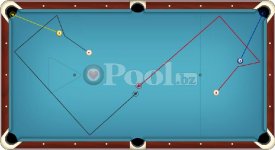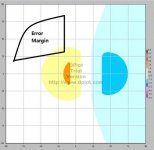It's called practice. Ever see Kinnisters #1 shot? It's stopping the cb dead without movement. Ever read Mark Wilson's book or been to a certified instructor? Of course it's hard to do if one never practices hitting the cb where they want to.
But, to your argument of it being too hard, so why bother.... if you can't hit center axis reliably, you can't hit anywhere reliably. And, as we all agree (I hope we do) any off-center axis hit will produce squirt. Knowing that, how can you reliably compensate for squirt (not using proper BHE) if you don't even know how much you will get because you can't hit the cb where you want to? How can that be any easier?
Here's something you haven't seemed to considered- If you can't hit the cb dead center and follow into the same pocket, you can't ever hit the cb where you want to.

Using english isn't going to magically make you hit the cb where you intended to.
Pool played right looks very easy. But, to play it right takes a LOT of work. Something few are willing to do.
edit: One other thing, if you can't hit the cb where you want to, you aren't going to hit the ob where you want to either.
double edit: Something else you need to consider- one can also shoot the shot you described, hit perfectly center axis on the cb, and totally miss the shot. Your aim line has to be perfect also. If your shot line is a hair off, you still won't follow the cb into the hole. That is what makes the shot seem so tough. One can make the ball, and think they did good. But, the shot you described will test aiming, accurate cb striking, and accuracy of your stroke. You need all three to be successful with it. When one fails at the shot, they need to find out what area they failed in. CB accuracy could be perfect.

